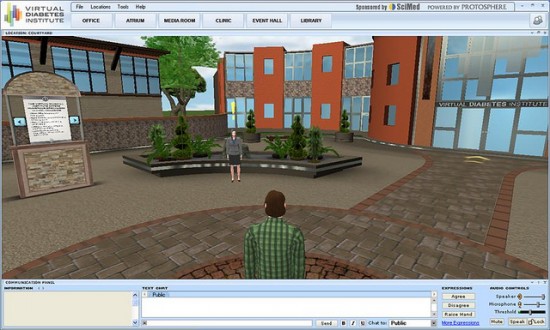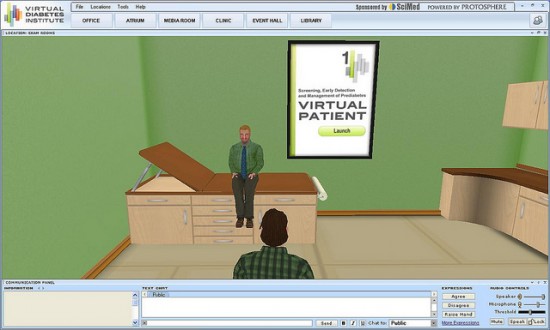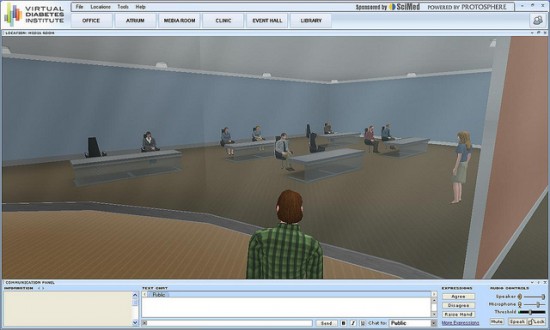The world’s first virtual diabetes institute opened its doors last Wednesday, helping physicians improve the ways in which they treat Type 2 diabetes patients. The institute was built by SciMed, a  leading provider of continuing medical education for physicians, using ProtonMedia’s ProtoSphere virtual environment platform.
It promises to provide continuing education with greater flexibility, interactivity, and lower costs than traditional programs.

Flexible scheduling
The Virtual Diabetes Institute is always open, allowing physicians to learn on their own schedules.
“Training can be completed at any time from any location,” ProtonMedia CEO Ron Burns told Hypergrid Business. “The training courses are available 24-7 and physicians can enter and leave the Virtual Diabetes Institute whenever convenient for them.”
Doctors can also pause the training if they need to, he added.
“Data persistency provides physicians the ability to respond to other emergencies in real time and rejoin their course exactly where they left off,” Burns said.
Doctors don’t have to take time away from their practice and patients, he added.
The virtual delivery of the training program also means that doctors don’t have to spend money on travel.

Human interaction
Although the training is delivered in a virtual world environment, that doesn’t mean it’s impersonal — there are also group classes that the physicians can attend, where each participant is represented by a virtual avatar.
“The immersive environment allows users to collaborate with other physicians that they may never have met before,” said Burns. “This interactivity allows for physicians to expand their professional network, interact with their peers and continue their medical education.”

Along with individual practice areas and group classes, there are also testing environments where physicians can find out how much they have learned.
According to SciMed president Matthew Weingarten, many medical organizations, including  the American Board of Medical Specialties, the American Medical Association, and the Accreditation Council for Continuing Medical Education, are trying to improve health care by setting professional competency standards and encouraging  the development of innovating and engaging educational activities for physicians.
“Principles articulated by these organizations underlie the educational framework of this initiative and we see the Virtual Diabetes Institute as a promising way to address these goals,” he said in a statement. “It marks one of the first applications of virtual environment technology in continuing medical education.â€
SciMed is currently rolling out the first two tracks of its Virtual Diabetes Institute, and another three tracks are scheduled to go live by December 2011. The initiative is supported by an independent educational grant from Merck.
- Oculus confab features Gear VR, Minecraft, Netflix - September 30, 2015
- Global Conference on Gifted Education Meets in Second Life - August 31, 2011
- Docs to get virtual diabetes training - August 22, 2011
